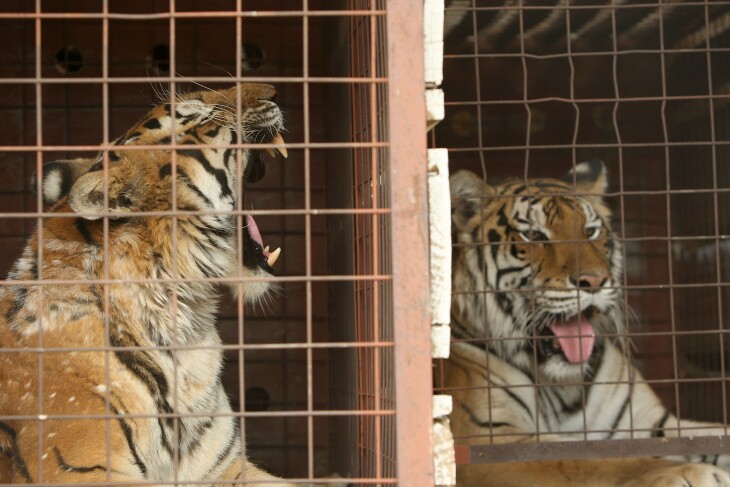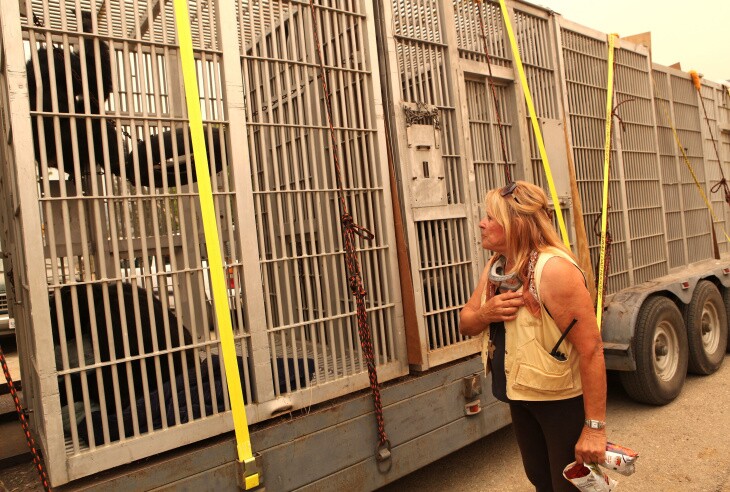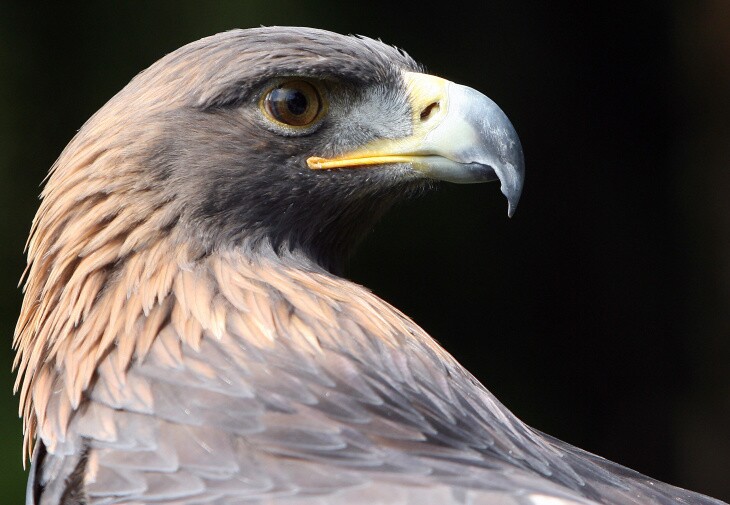Truth matters. Community matters. Your support makes both possible. LAist is one of the few places where news remains independent and free from political and corporate influence. Stand up for truth and for LAist. Make your year-end tax-deductible gift now.
The Wildlife Waystation Has Closed. So What Happens To All Those Lions And Tigers And Chimps?

Hundreds of animals, including lions, tigers, bears and chimpanzees that once had a safe haven at an animal sanctuary just north of Los Angeles, are now in need of a new home.
The Wildlife Waystation, nestled in the Angeles National Forest near Sylmar and Tujunga, is closing after 43 years. The board of directors notified the California Department of Fish and Wildlife of their vote to shut the facility on Aug. 11. Now the CDFW is stepping in to take over and relocate the 470 animals living there, many of them exotic species.
"A lot of these animals that they've taken in were exotic animals that were imported into the state illegally that have been seized and then given to the Waystation," said Jordan Traverso, deputy director of the CDFW.
Other creatures were relinquished to the sanctuary when their owners could no longer care for them.
In recent years, the Waystation's aging facility had struggled with upkeep after extensive damage from the Creek Fire in 2017 and flooding in 2019, Traverso said. The Waystation also recently had a change in leadership when founder Martine Colette left her position as the organization's president and COO in May.

To keep certain exotic and wild animals, you need a special permit from the state. Those permits are only given to organizations with a legitimate reason to have the animals, not people who want a unique pet. There are a number of requirements to keep these permits valid, and Traverso said the Waystation was having a hard time meeting those standards.
Now that the CDFW has taken control, it will care for the animals at the Waystation facility until the animals can be placed into new homes.
The hardest critters to place won't be the big cats like lions and tigers, Traverso said, but the 42 chimpanzees, some of whom are older animals with specific needs.
According to the Waystation's website, it was the largest chimp sanctuary in the western United States, with many of the animals coming from research labs.
The Waystation had taken in other animals with special medical needs, so the CDFW will have to find other organizations that can provide that same level of care.

The good news is that other animal sanctuaries are already volunteering. Traverso said the CDFW has a network of national, international and local organizations that can actually take care of such animals.
Some of those groups have even offered to help transport the animals, which can be a difficult process on its own, she said, because of the enclosures the animals need and they stress it can cause them.
"All kinds of different help has been coming out of the woodwork, but we actually think it's probably going to be a pretty difficult process to get through placing all those animals," Traverso said. "But we'll be there until it's complete."

-- NORMAL --
-- NORMAL --







